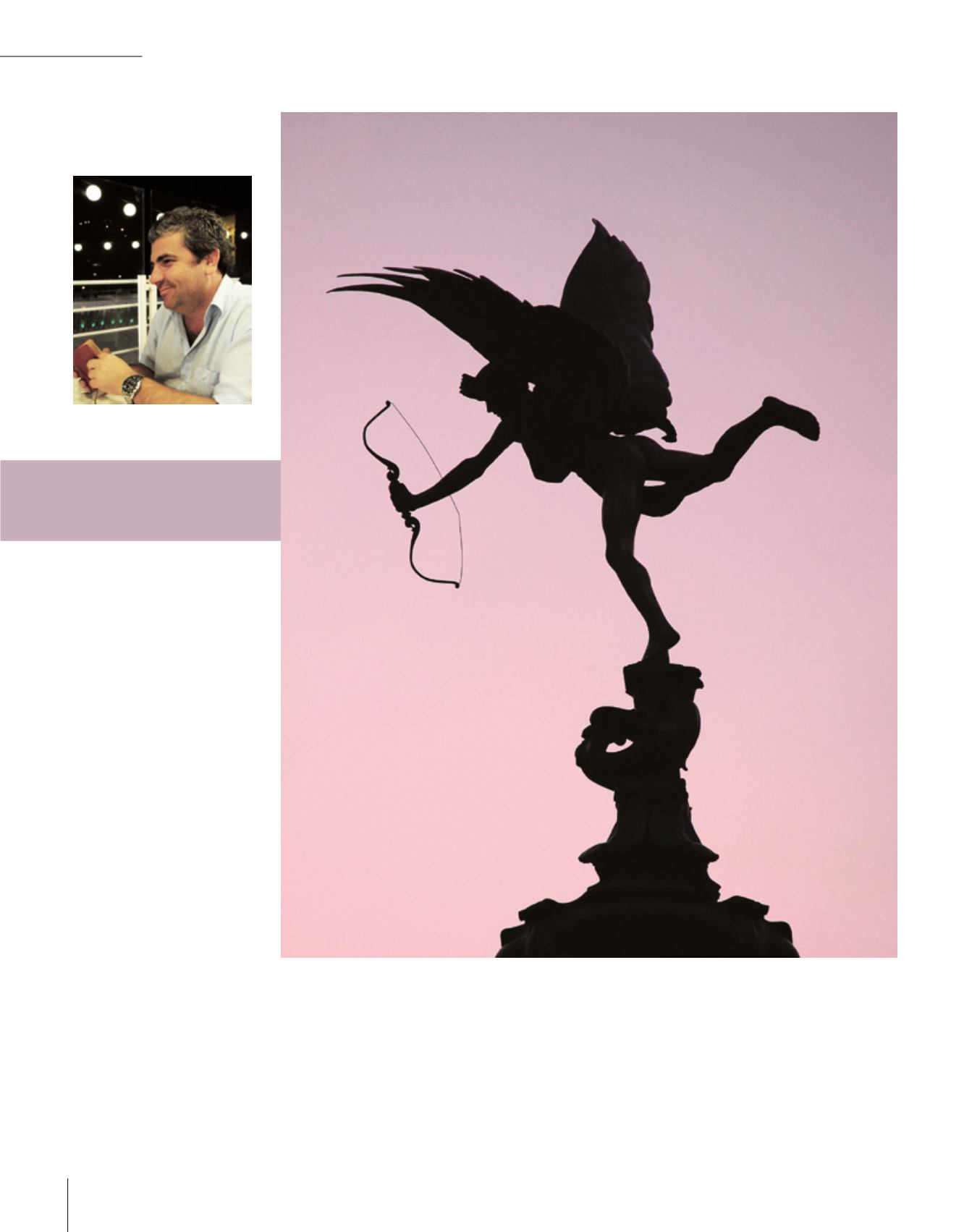
82
Abdülkadir Kılınç
Eros
Eski Yunan dilinde aşk
veya sevgi için kullanılan
dört ayrı sözcük vardı:
Agape, Philia, Storge
ve Eros. “Storge”
aile sevgisini, “Philia”
arkadaşça sevgiyi,
“Agape” gerçek aşkı,
“Eros” ise tutkulu aşkı
ifade ediyordu.
There were four different
words used in Ancient
Greek for love: Agape,
Philia, Storge and Eros.
“Storge” signified love
of family, “philia” meant
friendly love, “agape” was
real love and “eros” was
passionate love.
“Eros”un “agape”den farkı,
ilk görüşte duyulan aşkı,
tensel çekimi, karşıdakini
arzulamayı ifade etmesidir ki
dilimize de yerleşmiş “erotik”
sözcüğünün kökeni de odur.
Eros, Yunan mitolojisinin
herhangi iki karakteri arasında
bu çekimi ansızın oluşturabilen
Yunan aşk tanrısıdır. Antik
Eros tasvirlerinin içinde lir,
flüt, horoz, gül ve yunus
balıkları bulunur ki bunlar da
Eros’un sembolleridir. Aşk
ateşini, bazen ok ve yayla
(aşk acısı), bazen de elinde
tuttuğu meşale (yakıcı aşk) ile
ölümlüler kadar ölümsüzlerin
The difference between “Eros”
and “agape” was that it signified
love at first sight, physical
attraction and longing for another
and it is the root of the word
“erotic” used in our language.
Eros is the Greek god of love
that can kindle this kind of love
between any two characters of
Greek mythology. Ancient Eros
depictions include lyre, flute,
rose and dolphins which are the
symbols of Eros. It is only Eros
who can kindle the flame of love
in the hearts of mortals as well
as immortals using sometimes
a bow and an arrow (love pain)
and sometimes the torch he
holds in his hand (burning love).
Eros is passionately devoted
semboller
symbols


